Are Closeouts Good or Bad For The Sport?
Are Closeouts Good or Bad For The Sport?
In the past two years, I have also read quite a few negative comments on the topic of division closeouts.
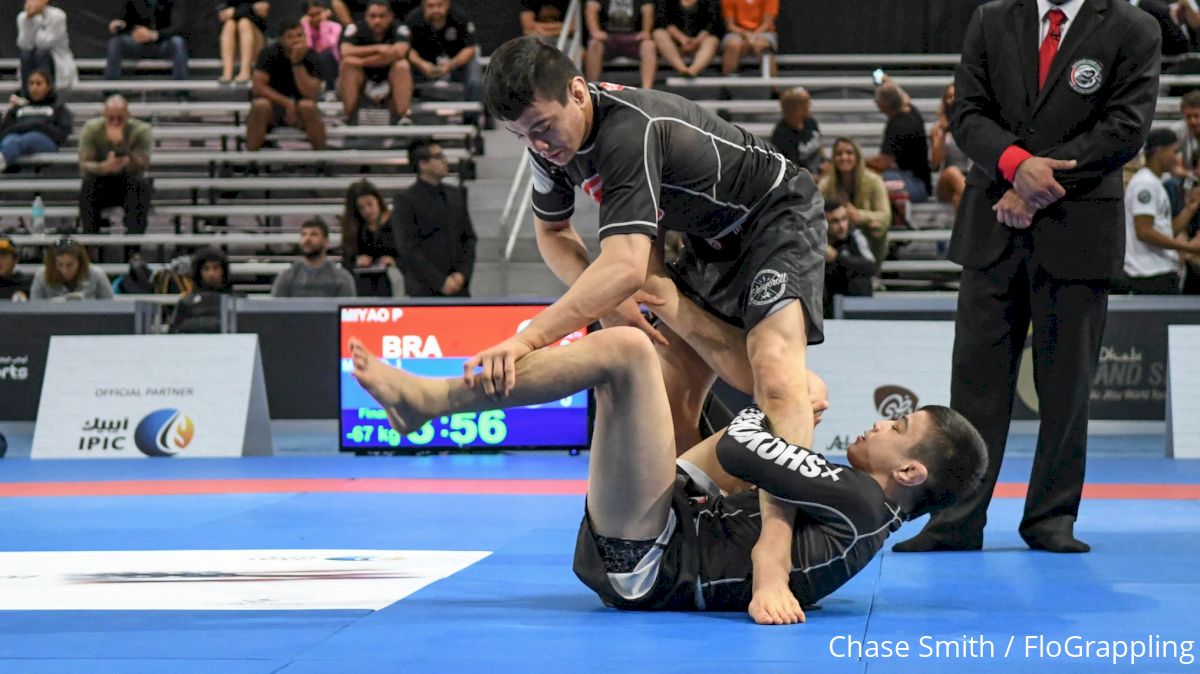
In the past two years, I have closed out five IBJJF division finals with my teammates. During this time, I have also read quite a few negative comments on the topic of division closeouts. It seems that many jiu-jitsu practitioners and spectators feel that teammates should compete against each other in the event that they work their way through the bracket and meet in the finals, or sometimes the semifinals.
Of the five closeouts in which I have participated, I have accepted four silver medals and one gold. As the teammate who more often than not concedes the gold medal, I feel I can provide some insight as to why we continue to close out divisions without fighting our teammates.
In short, the way we see it is that there is no need to create rivalry amongst ourselves for a tournament as small as a one-star IBJJF Open. Additionally, we do not see the point in burning each other out fighting in the weight class when we still have an open class to conquer. Lastly, this was a no-gi division so there were no ranking points to squabble over.
For those unfamiliar with ranking points, every IBJJF tournament is rated by a number of stars. Ranking points are calculated by multiplying the star rating of the tournament with the number of points assigned to the three podium positions. This number is then multiplied by a time relevance factor, which is three points if the medal was earned in the current calendar year, two points if it was last year, and one point if it was the previous year. Any points earned before that are irrelevant. Ranking points are only earned in gi divisions.
Back in 2009, Marcelo Garcia and Serginho Moraes settled a closeout victory for the middleweight world championship with a game of odds and evens. GracieMag described an interview with the two where they humorously explained that if they had fought each other, the loser might try to poison the other in the near future.
In 2014, JT Torres and Keenan Cornelius settled an American Nationals open class closeout with a coin toss. Similarly, Michael Liera Jr. and I settled a 2015 Seattle Open middleweight closeout with a coin toss.
For the competitors at Atos HQ, when both teammates do not wish to concede the gold medal (or both teammates need qualifying points for the Worlds), the team's professor often decides the match or defers the athletes to a coin toss.
For white to brown belts, there are no qualifying points for the IBJJF World Championships, and the only real claim one teammate could make to the other is that they receive a larger sponsorship bonus for earning a gold medal. However, in many cases, some sponsors will not pay full bonuses for closeout victories, or they will pay 50 percent of the contract bonus. As mentioned above, closing out divisions with teammates is not a team policy as much as it is a strong suggestion by the leaders of the team. Of course, if two teammates are dead set on a gold medal, they have every right to decline the close out and fight in the finals. In the event that two teammates who train together everyday meet in the finals of a major tournament such as the IBJJF Worlds or ADCC, it is fully expected that they will fight for the championship title.
If competitors knew that they would have to fight against their teammates at every tournament for which they registered, these two competitors might start avoiding each other in the training room. They might stop sharing their favorite techniques with each other. They might stop competing in the same tournaments, which ultimately would lower the amount of competition experience and social media exposure they would be able to obtain. They might completely avoid each other during training camps for IBJJF Worlds, Abu Dhabi World Pro, or ADCC.
Worst of all, one of these competitors might leave the team and seek out a different training camp for their major competition endeavors. Ultimately, this hurts the whole team.
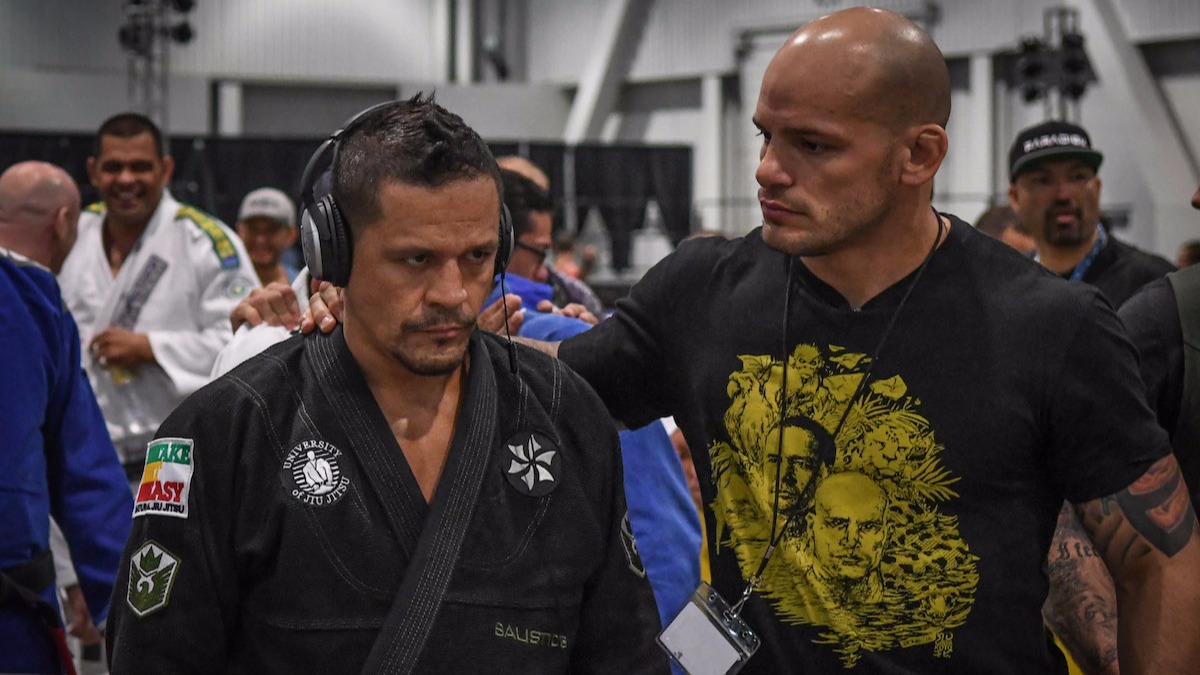
It seems understandable that two brothers, such as Saulo and Xande Ribeiro, would not want to fight each other in a tournament. Nor would the Mendes Brothers, or the Miyao Brothers (even though they have, when forced). Also, I think most jiu-jitsu spectators can more easily accept a brotherly closeout because, hey, they are brothers… of course they would not want to fight each other. But who is to say that many non-blood-related teammates do not treat each other with the same amount of love and respect as brothers?
Would anyone expect Andre Galvao to fight his older brother Gustavo Galvao? I think not. So why is it so easily expected that teammates should fight each other? I think teammates who live together, train together everyday, share meals together, travel together, and hang out together off the mats can be just as close as brothers.
Does this actually solve the problem from the spectator's or tournament promoter's point of view? I think it does not. I think teammates who are forced to fight each other under the threat of double disqualification (or no cash award) do so with insincere efforts.
A fine example of insincere competition was witnessed at the 2016 LA Grand Slam event just earlier this month. The Miyao brothers had a no-gi "match" against each other in the finals of the 67kg division. It was essentially an effortless live drilling session for the twins at the end of which Paulo gave Joao his arm and tapped with one second left in the round. It was a non-competitive match that cannot really even be called a match. It was just an active way to choose the winner. They danced for the event promoters, and in the end it was the exact same result as if they were to enter the mat and close out.
Another example is the EBI3 semi finals match between Garry Tonon and Eddie Cummings. Similar to the UAEJJF, the EBI promoters do not permit closeouts and teammates are scheduled to fight each other in the semifinals of the bracket. It did not seem as though Tonon and Cummings competed against each other wholeheartedly. It was a visually beautiful match of seemingly flawless transitions from one submission attempt to the next, but it also seemed a little too flowy and effortless. And it's a little too convenient that the submission was caught within the regulation time period, ensuring an additional $2,500 to the eventual winner.
As I mentioned above, the practice of closeouts is not so much a rule as it is a strong suggestion. When cash prizes, or major world titles are on the line, everyone fights. For example, Andre Galvao and his student Keenan Cornelius competed against each other for the bronze medal of the 2014 Abu Dhabi World Pro. Keenan would later describe this match as one of the most awkward moments of his competitive career... And understandably so.
This is also what I believe to be the best way to manage kids' teams. As a primary instructor of the kids' competition team at Atos HQ, I would not have the heart to tell one kid or another to bow out to their teammate. Nor would I want them to compete against each other without allowing myself the ability to fairly coach both of them. If two of my 8-year-old students are competing in the finals of Pan Kids, I could not imagine how I would try to coach them against each other. Lastly, I would want no part in explaining a closeout decision to the parents.
I believe these "grapple-off" match-ups should happen in the training room, with the approval of both sets of parents, and with multiple coaches assisting the kids. Lastly, there are inevitably going to be situations where competitors from different camps within the same team meet in the finals. For instance, an Atos HQ competitor may meet an affiliate from the AoJ camp. We don't train together day in and day out. We're more like cousins than brothers. In a case like this, we fight.
Josh Hinger is a black belt and active competitor representing Atos Jiu-Jitsu. Follow him on Instagram and Facebook.
Of the five closeouts in which I have participated, I have accepted four silver medals and one gold. As the teammate who more often than not concedes the gold medal, I feel I can provide some insight as to why we continue to close out divisions without fighting our teammates.
The Way We See It
Last month, my teammate Lucas Barbosa and I traveled to the 2016 IBJJF Chicago Summer Open and we closed out the black belt no-gi medium heavyweight division (as well as the no-gi open class). I took the gold for our weight class, and he took the gold for the absolute.In short, the way we see it is that there is no need to create rivalry amongst ourselves for a tournament as small as a one-star IBJJF Open. Additionally, we do not see the point in burning each other out fighting in the weight class when we still have an open class to conquer. Lastly, this was a no-gi division so there were no ranking points to squabble over.
For those unfamiliar with ranking points, every IBJJF tournament is rated by a number of stars. Ranking points are calculated by multiplying the star rating of the tournament with the number of points assigned to the three podium positions. This number is then multiplied by a time relevance factor, which is three points if the medal was earned in the current calendar year, two points if it was last year, and one point if it was the previous year. Any points earned before that are irrelevant. Ranking points are only earned in gi divisions.
How It's Decided Who Wins
In many cases at the black belt level, seniority is a major factor in deciding who will concede to whom. This year at the IBJJF World Championships, we saw Gabriel Arges bow out to senior Gracie Barra teammate Otavio Souza in the finals of the middleweight division. One might assume that black belt seniority was a primary factor in this closeout.Back in 2009, Marcelo Garcia and Serginho Moraes settled a closeout victory for the middleweight world championship with a game of odds and evens. GracieMag described an interview with the two where they humorously explained that if they had fought each other, the loser might try to poison the other in the near future.
In 2014, JT Torres and Keenan Cornelius settled an American Nationals open class closeout with a coin toss. Similarly, Michael Liera Jr. and I settled a 2015 Seattle Open middleweight closeout with a coin toss.
For the competitors at Atos HQ, when both teammates do not wish to concede the gold medal (or both teammates need qualifying points for the Worlds), the team's professor often decides the match or defers the athletes to a coin toss.
For white to brown belts, there are no qualifying points for the IBJJF World Championships, and the only real claim one teammate could make to the other is that they receive a larger sponsorship bonus for earning a gold medal. However, in many cases, some sponsors will not pay full bonuses for closeout victories, or they will pay 50 percent of the contract bonus. As mentioned above, closing out divisions with teammates is not a team policy as much as it is a strong suggestion by the leaders of the team. Of course, if two teammates are dead set on a gold medal, they have every right to decline the close out and fight in the finals. In the event that two teammates who train together everyday meet in the finals of a major tournament such as the IBJJF Worlds or ADCC, it is fully expected that they will fight for the championship title.
Why We Do It
The overall goal of closeout victories with teammates is simple… We want to keep our team tight-knit like a family.If competitors knew that they would have to fight against their teammates at every tournament for which they registered, these two competitors might start avoiding each other in the training room. They might stop sharing their favorite techniques with each other. They might stop competing in the same tournaments, which ultimately would lower the amount of competition experience and social media exposure they would be able to obtain. They might completely avoid each other during training camps for IBJJF Worlds, Abu Dhabi World Pro, or ADCC.
Worst of all, one of these competitors might leave the team and seek out a different training camp for their major competition endeavors. Ultimately, this hurts the whole team.

It seems understandable that two brothers, such as Saulo and Xande Ribeiro, would not want to fight each other in a tournament. Nor would the Mendes Brothers, or the Miyao Brothers (even though they have, when forced). Also, I think most jiu-jitsu spectators can more easily accept a brotherly closeout because, hey, they are brothers… of course they would not want to fight each other. But who is to say that many non-blood-related teammates do not treat each other with the same amount of love and respect as brothers?
Would anyone expect Andre Galvao to fight his older brother Gustavo Galvao? I think not. So why is it so easily expected that teammates should fight each other? I think teammates who live together, train together everyday, share meals together, travel together, and hang out together off the mats can be just as close as brothers.
What Happens When You Force Teammates To Fight
Outside of the IBJJF, there are several tournament formats that do not allow teammates to close out, including the UAEJJF, ADCC, EBI, and surely several others. Pretty much any event that pays an award to the winner does not permit closeouts. If the teammates insist on a closeout, the award would be forfeit.Does this actually solve the problem from the spectator's or tournament promoter's point of view? I think it does not. I think teammates who are forced to fight each other under the threat of double disqualification (or no cash award) do so with insincere efforts.
A fine example of insincere competition was witnessed at the 2016 LA Grand Slam event just earlier this month. The Miyao brothers had a no-gi "match" against each other in the finals of the 67kg division. It was essentially an effortless live drilling session for the twins at the end of which Paulo gave Joao his arm and tapped with one second left in the round. It was a non-competitive match that cannot really even be called a match. It was just an active way to choose the winner. They danced for the event promoters, and in the end it was the exact same result as if they were to enter the mat and close out.
Another example is the EBI3 semi finals match between Garry Tonon and Eddie Cummings. Similar to the UAEJJF, the EBI promoters do not permit closeouts and teammates are scheduled to fight each other in the semifinals of the bracket. It did not seem as though Tonon and Cummings competed against each other wholeheartedly. It was a visually beautiful match of seemingly flawless transitions from one submission attempt to the next, but it also seemed a little too flowy and effortless. And it's a little too convenient that the submission was caught within the regulation time period, ensuring an additional $2,500 to the eventual winner.
As I mentioned above, the practice of closeouts is not so much a rule as it is a strong suggestion. When cash prizes, or major world titles are on the line, everyone fights. For example, Andre Galvao and his student Keenan Cornelius competed against each other for the bronze medal of the 2014 Abu Dhabi World Pro. Keenan would later describe this match as one of the most awkward moments of his competitive career... And understandably so.
How To Solve The Problem Fairly
One possible solution to the closeout dilemma is to assign teammates who could potentially face each other in a bracket to an A team and a B team, and if necessary a C team. Teammates can fight in their own training room with the professor as the referee. Competitors can then be assigned to A and B teams based on those results. In wrestling, we called them "wrestle-offs." This ensures the best grapplers advance in the brackets without having to fight a grueling, awkward, and unfulfilling match against their teammates under the spotlight and before competing in the open class.This is also what I believe to be the best way to manage kids' teams. As a primary instructor of the kids' competition team at Atos HQ, I would not have the heart to tell one kid or another to bow out to their teammate. Nor would I want them to compete against each other without allowing myself the ability to fairly coach both of them. If two of my 8-year-old students are competing in the finals of Pan Kids, I could not imagine how I would try to coach them against each other. Lastly, I would want no part in explaining a closeout decision to the parents.
I believe these "grapple-off" match-ups should happen in the training room, with the approval of both sets of parents, and with multiple coaches assisting the kids. Lastly, there are inevitably going to be situations where competitors from different camps within the same team meet in the finals. For instance, an Atos HQ competitor may meet an affiliate from the AoJ camp. We don't train together day in and day out. We're more like cousins than brothers. In a case like this, we fight.
Josh Hinger is a black belt and active competitor representing Atos Jiu-Jitsu. Follow him on Instagram and Facebook.
Liked this article? You may also enjoy...
- A Question Of Age: An Over 30's Perspective On Adult vs Masters Divisions
- In Defense Of Jiu-Jitsu's Most Hated Rule: The Pros and Cons of Advantages
- How to Manage Your Mind on Tournament Day
- The Brutal, Painful Reality Of Training In A World-Class Jiu-Jitsu Gym
- Beware Of The False Champions With Medals They Don't Deserve
Related Content
 Mic'd Up: Vagner Rocha Coaches Daughter Jasmine To Crucial ADCC Trials Win vs Tammi Musumeci
Mic'd Up: Vagner Rocha Coaches Daughter Jasmine To Crucial ADCC Trials Win vs Tammi MusumeciApr 19, 2024
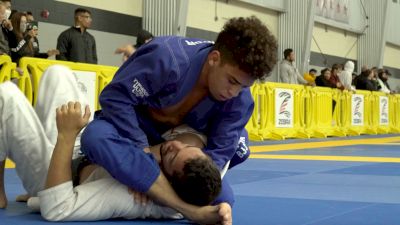 Brackets & Schedule Are HERE For The 2024 IBJJF Brasileiro Championships
Brackets & Schedule Are HERE For The 2024 IBJJF Brasileiro ChampionshipsApr 19, 2024
 PJ Barch Officially Invited to ADCC 2024 At -77kg
PJ Barch Officially Invited to ADCC 2024 At -77kgApr 19, 2024
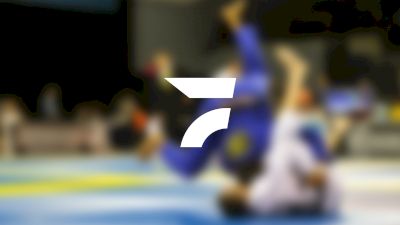 How to Watch: 2024 World Master IBJJF Jiu-Jitsu Championship | Grappling
How to Watch: 2024 World Master IBJJF Jiu-Jitsu Championship | GrapplingApr 19, 2024
 Supercut: Victor Hugo Wins '23 Brasileiros Double Gold With Signature Submission Offense
Supercut: Victor Hugo Wins '23 Brasileiros Double Gold With Signature Submission OffenseApr 18, 2024
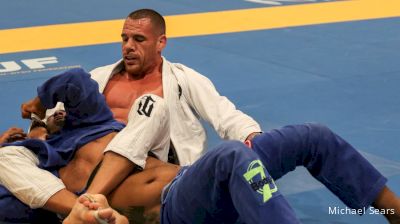 Every Non-Brazilian Jiu-Jitsu Competitor Who Has Won IBJJF Brasileiro
Every Non-Brazilian Jiu-Jitsu Competitor Who Has Won IBJJF BrasileiroApr 18, 2024
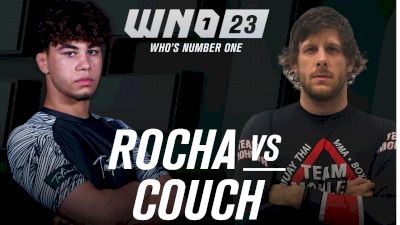 WNO 23 Undercard Announced, 4 Prelim Matches Complete The Card
WNO 23 Undercard Announced, 4 Prelim Matches Complete The CardApr 18, 2024
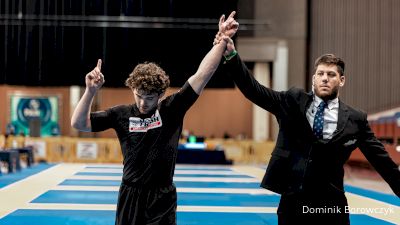 Dante Leon Officially Invited to ADCC 2024 At -77kg
Dante Leon Officially Invited to ADCC 2024 At -77kgApr 17, 2024
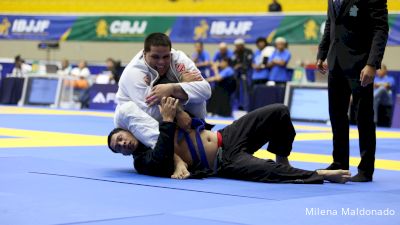 How To Watch IBJJF Brasileiro 2024
How To Watch IBJJF Brasileiro 2024Apr 17, 2024